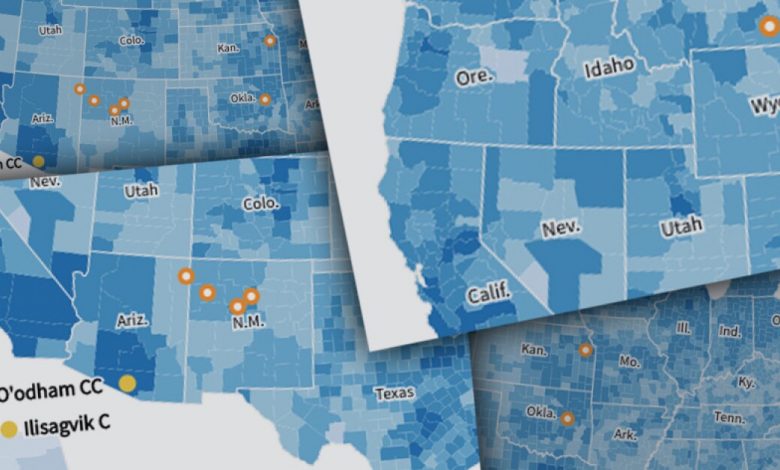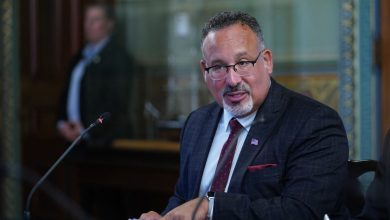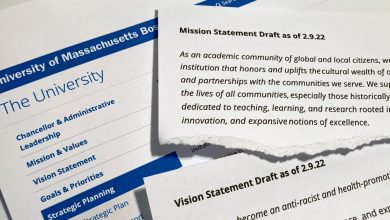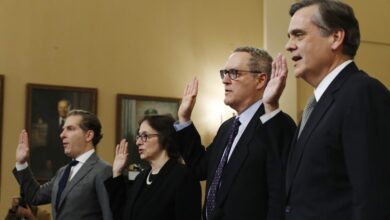Why Tribal Colleges Struggle to Get Reliable Internet Service

Tribal colleges overwhelmingly are located in areas of few broadband providers.
Note: Data includes the number of fixed residential broadband providers with broadband speeds of at least 25 Mbps downstream and 3 Mbps upstream. Provider data is from December 2020.
“You can be driving from a nearby town, and as soon as you hit the reservation, the internet and cellphone signals drop off,” said Cheryl Crazy Bull, president of the American Indian College Fund and a member of the Sicangu Lakota Nation. “Students would be in the middle of class and their Wi-Fi access dropped off.”
Worsening matters, many students have been limited by outdated equipment. “We had students who were trying to take classes on their flip phones,” Crazy Bull said. Such stories were cropping up throughout Indian territory.
When the Covid pandemic blew up in March 2020, Jacob McArthur was juggling roles as a student finishing up his own studies and the new information-technology coordinator at White Earth Tribal and Community College, in Mahnomen, Minn. It’s located on a reservation with extremely limited internet service and few spots that even get 4G cellphone service.
“I was looking forward to my first morning on the new job, and as I was getting ready for work, I got a text message from the school president saying, ‘Don’t come in. The campus has shut down due to Covid,’” he said. That was followed by a second message saying he needed to come in to help move faculty and students online as soon as possible.
One of the biggest challenges was acquiring enough Wi-Fi hotspots for students so they could access online instruction. Everyone, it seemed, was scrambling for hotspots, and online providers were limiting the number anyone could buy.
“I drove to every Walmart in a 150-mile radius buying out their stock,” McArthur said. “I had different winter hats on and, fortunately, was wearing a mask, so I was basically running around in disguises.” He then drove from end to end of the reservation, dropping off hotspots.
With students back on campus now, he wrote in an email, “The challenge we have faced due to limited bandwidth is that having several concurrent classes using HD webcams on Zoom, along with staff and students on campus using bandwidth at the same time, can cause our video streams to degrade, and our students at home have a tough time seeing what is being presented.” But good news is coming. He was able to persuade the college’s board to spend an extra $300 per month to upgrade the college’s internet service from 100 to 500 Mbps, enough to support the hybrid classes to which they hope to transition.
Source link






